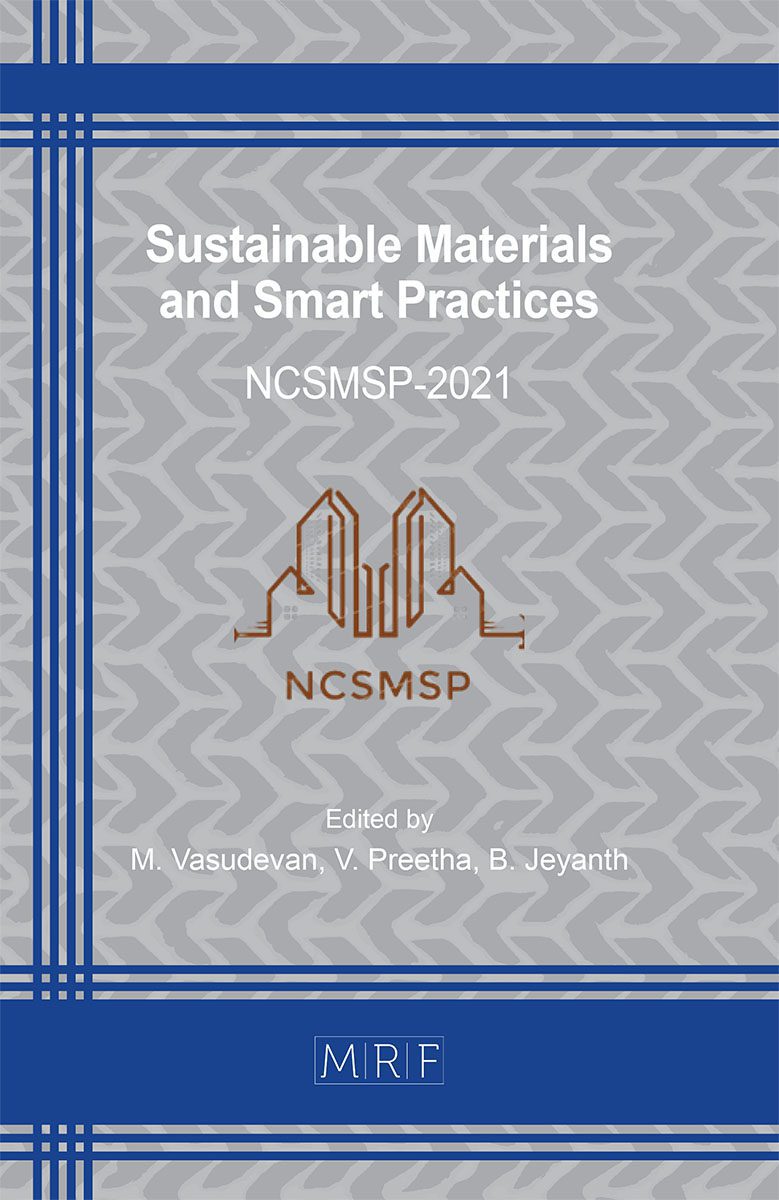Behaviour of Polypropylene and Steel Fibre Reinforced High Strength Concrete Exterior Beam Column Joint
L. Andal, M. Sathish Kumar, T. Nithiya Sree, V. Preetha
download PDFAbstract. The present work aims at studying the performance of polypropylene and steel fibre reinforced high strength concrete in exterior joint of beam-column. Individually and in combination, steel fibre with 0.25 %, 0.50 %, 0.75 %, and 1 % by volume of concrete and polypropylene fibre with 0.16 % and 0.32 % by volume of cement were induced into the concrete. The characteristics investigated are energy absorption capacity, displacement ductility and shear carrying capacity. From the obtained test results, it is concluded that 0.16% polypropylene fibre with 0.75% steel fibre in hybrid fibre composites show desired strength in all aspects of investigation.
Keywords
High Strength Concrete, Hybrid Fibre Reinforcement, Beam Column Joint, Joint Shear Force
Published online , 11 pages
Copyright © 2022 by the author(s)
Published under license by Materials Research Forum LLC., Millersville PA, USA
Citation: L. Andal, M. Sathish Kumar, T. Nithiya Sree, V. Preetha, Behaviour of Polypropylene and Steel Fibre Reinforced High Strength Concrete Exterior Beam Column Joint, Materials Research Proceedings, Vol. 23, pp 148-158, 2022
DOI: https://doi.org/10.21741/9781644901953-19
The article was published as article 19 of the book Sustainable Materials and Smart Practices
![]() Content from this work may be used under the terms of the Creative Commons Attribution 3.0 licence. Any further distribution of this work must maintain attribution to the author(s) and the title of the work, journal citation and DOI.
Content from this work may be used under the terms of the Creative Commons Attribution 3.0 licence. Any further distribution of this work must maintain attribution to the author(s) and the title of the work, journal citation and DOI.
References
[1] C. Röhm, B. Novák, S. Sasmal, R. Karusala, V. Srinivas, Behaviour of fibre reinforced beam- column sub-assemblages under reversed cyclic loading, Construction and Building Materials. 36 (2012) 319-29. https://doi.org/10.1016/j.conbuildmat.2012.04.114
[2] Vahid Afroughsabet, Togay Ozbakkaloglu, Mechanical and durability properties of high-strength concrete containing steel and polypropylene fibers, Construction and Building Materials. 94 (2015) 73-82. https://doi.org/10.1016/j.conbuildmat.2015.06.051
[3] R. Siva Chidambaram, Pankaj Agarwal, Seismic behavior of hybrid fiber reinforced cementitious composite beam column joints, Materials and Design. 86 (2015) 771-781. https://doi.org/10.1016/j.matdes.2015.07.164
[4] V. Ramakrishnan, Structural synthetic fibres for three-dimensional reinforcement of concrete, ACI Special Publication. 261 (2009) 55-72.
[5] N. Ganesan, P.V. Indira, M.V. Sabeena, Behaviour of hybrid fibre reinforced concrete beam column joints under reverse cyclic loads, Materials and Design. 54 (2014) 686-693. https://doi.org/10.1016/j.matdes.2013.08.076
[6] N. Ganesan, P.V. Indira, M.V. Sabeena, Bond stress slip response of bars embedded in hybrid fibre reinforced high performance concrete, Construction and Building Materials. 50(2014) 108-115. https://doi.org/10.1016/j.conbuildmat.2013.09.032
[7] J.S. Kuang, H.F. Wong, Effects of beam bar anchorage on beam column joint behavior, Structures & Buildings. 159(2006) 115-124. https://doi.org/10.1680/stbu.2006.159.2.115
[8] J.S. Kuang, H.F. Wong, Effects of beam column depth ratio on joint seismic behavior, Structures & Buildings. 161(2008) 91-101. https://doi.org/10.1680/stbu.2008.161.2.91
[9] S.R. Uma, Sudhir K. Jain, Seismic design of beam column joints in RC moment resisting frames – review of codes, Structural Engineering and Mechanics. 23(2006) 579-597. https://doi.org/10.12989/sem.2006.23.5.579
[10] Indian Standard Method, Physical tests for hydraulic cement, determination of consistency of standard cement paste. IS 4031; Part 4: 1988.
[11] Indian Standard Method, Physical tests for hydraulic cement, determination of initial and final setting times. IS 4031; Part 5: 1988.
[12] American Concrete Institute, Guide for selecting proportions for high-strength concrete with portland cement and fly ash. ACI committee 211: Reapproved 1998.
[13] Indian Standard, Ductile detailing of reinforced concrete structures subjected to seismic forces – code of practice. IS 13920:1993.
[14] American Concrete Institute. Building code requirements for reinforced concrete and commentary. ACI 318 R-05:2002.
[15] Standards Association of New Zealand. The Design of Concrete Structures. NZS 3101:1995.































